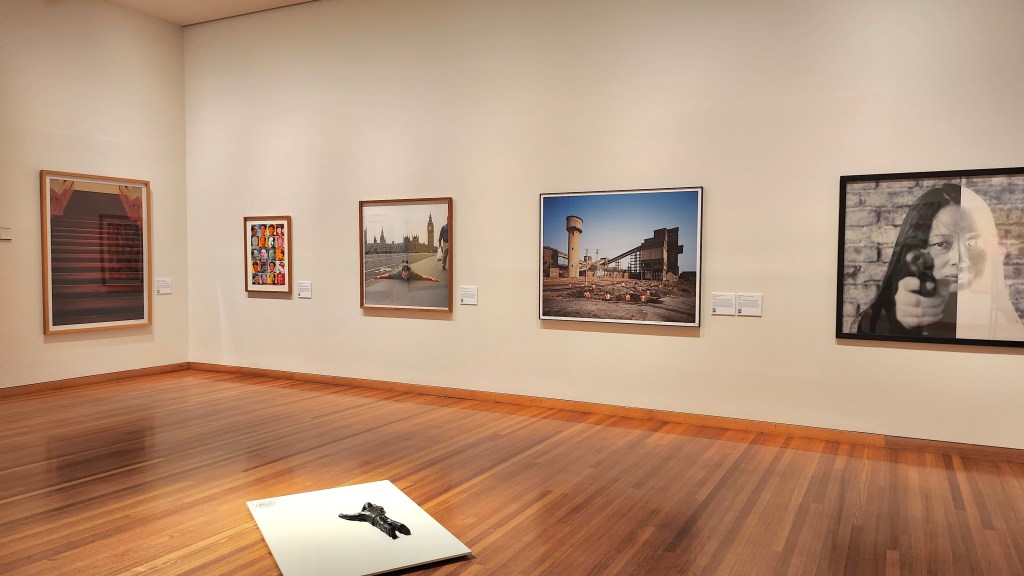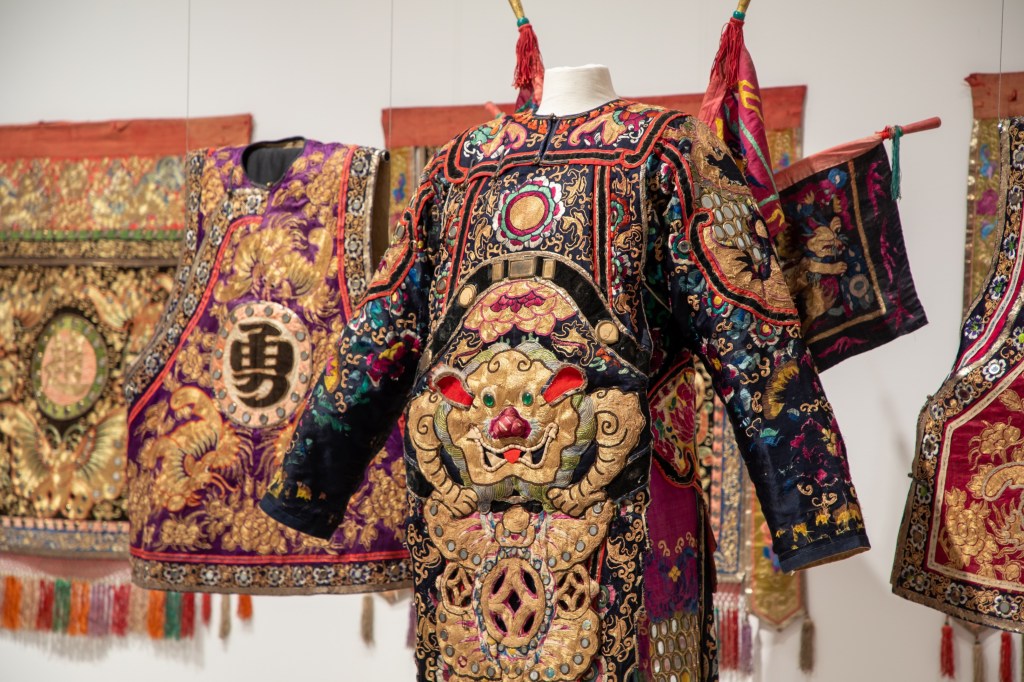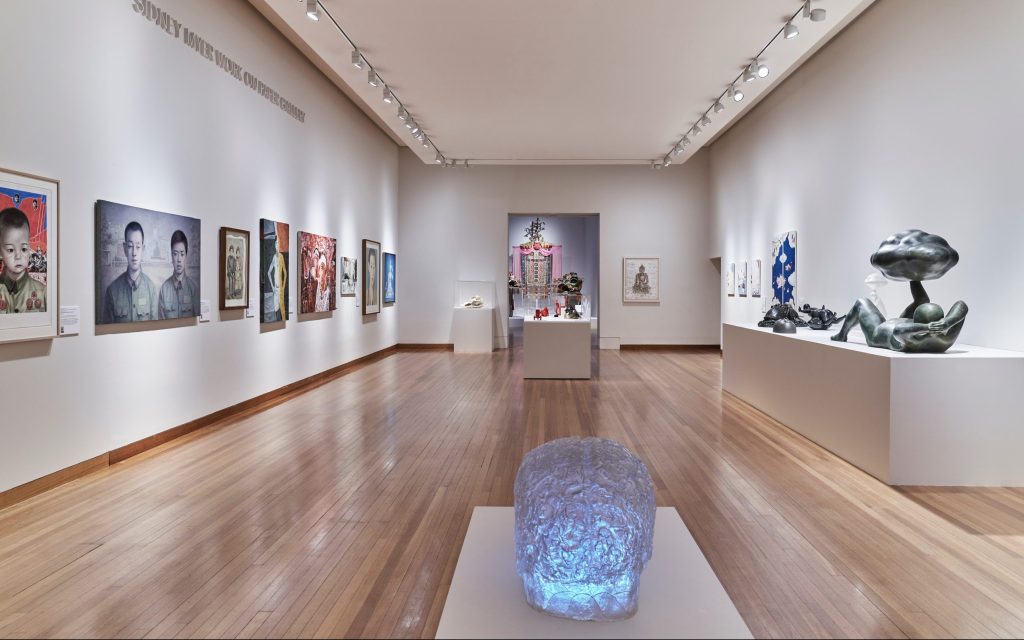Two concurrent exhibitions showcasing Chinese art from traditional to contemporary are on view at Bendigo Art Gallery: In Our Time from the Geoff Raby Collection and Treasures of Dai Gum San, Chinese artistry from the Golden Dragon Museum.
For those who come from a Chinese background (as does this reviewer), the works on view taps into an awareness of historical, social, and cultural contexts that underpins many of the works, refreshed in the context of Australia and current diplomatic ties.
Geoff Raby AO was a former Australian ambassador to Beijing in 1986 and quickly became heavily engaged in the local emerging art scene, at one point offering his own apartment as a venue for pop-up exhibitions that were common at the time.
Through more than 70 objects spanning 30 years – part of a total of 170 recently donated to La Trobe University – one is offered a glimpse into the lives of artists who are dealing with a rapidly changing nation and its overwhelming appetite for power and growth.
Instantly recognisable is a textbook moment often cited as pivotal in Chinese contemporary art – Xiao Lu’s Dialogue (2004) in which the artist fired two gunshots into her work at the exhibition China/Avant-garde in 1989.
In a stance which stares directly at the viewer with determination and purpose, Lu’s black and white portrait recalls the admirable feat that artists were able to achieve in a time of turmoil, hosting the largest experimental exhibition in communist China (though it was shut down twice during the span of its two week run).
Just two months later, student-led demonstrations resulted in a blood bath in Tiananmen Square, one much more violent and threatening than Xiao’s gunshot.
Nearby another self portrait contrasts humorously with Xiao’s. In Communication series – Big Ben (2001), Cang Xin lies on the pavement of Westminister Bridge face down, tongue out and arms outstretched. Embracing or becoming one with the Earth, Cang physically embeds himself into the iconic landscape and its representation of democracy.

A large majority of works highlight these political backgrounds, some more straightforward and unapologetic while others more subdued but equally powerful.
Feng Yan’s ’The people’s conference hall’ from the series ’Power’ demands a moment of pause, even with the simple imagery of red carpeted staircase.
The quiet authority in which these empty staircases impose is almost engrained in the minds of ’the people’, even though none are presented in the photograph.
A series of works by Guan Wei feature prominently in the show, including two from the 80s with acupuncture motifs, a major diptych, Day after tomorrow no. 5 (2007) and three from the Water View series, 2011.
In works around 2010, we see more materialist and technological motifs starting to emerge. Such include Shi Jianmin’s Untitled (2015) with an Apple logo on the sleeve of an ancient scholar and Jhamsang’s ’Tara’ from the series ’Buddha’ (2009) of a female deity fashioned like a cyborg, holding a gun to her head.
Also on view is Xu Zhongmin’s intoxicating zoetrope, which loses a bit of its sensory impact in the open plane gallery if compared to the large-scale installation room previously shown at White Rabbit Gallery, but nevertheless a considered inclusion commenting on mortality and China’s one child policy (1980-2016).
Chinese artists who are now residing in Australia provide a further local link and resonance with the audience, including Sydney-based Wang Zhiyuan, Ah Xian, Guan Wei, Shen Shaomin and Melbourne-based Tan Yifeng.
Rather than seeing the exhibition and collection as one which aims to encapsulate 40 years of art during a country’s most fluctuating years, each work can act as a departure point for viewers to follow their curiosity and delve into something further.
For those who are interested to follow the journey of contemporary art in China, checking out what’s being programmed at major cultural hubs such as Power Station of Art (host of Shanghai Biennale), UCCA Centre for Contemporary Art, Hong Kong’s newly opened M+ Museum (Uli Sigg’s collection) among a plethora of others both in and out of major cities will extend this understanding into the present.
With clever curation, a thread runs through the four decades of art presented that is not linear (nor is history), but allow works to jump, intersect and resonate and for viewers to reconsider their significance now.
A nod towards the history of Chinese communities in Bendigo
If the preceding exhibition encapsulates rapidly shifting thought and sentiments in a growing economy, Treasures of Dai Gum San is an exemplification of traditional ideals through eye-opening craftsmanship.
Objects presented are on par with artefacts that you’d find at national museums, from a grand cloisonné urn with cranes (Qing dynasty) to intricate costumes in Cantonese and Peking opera.
The works on display trace lineages and generations, and more importantly the people and communities who extended their traditions to establish a sense of belonging in a foreign country.
While the space and time of these traditions might have changed, their grounding philosophy and pursuit of beauty and intricacy hasn’t.
Lion dance costumes, now a more or less common occurence during Lunar New Years across Australia, is just one aspect carrying across that spirit of celebration and shown in the exhibition.

Dai Gum San translates directly to ‘the big gold mountain’, a dream of great fortune that drove many from their homelands in the early 1850s.
While not explicitly stated, these objects are a testament of how cultural identity and pride was carried through craftsmanship when the communities faced hostility in the 19th century.
Pieces on view comes from Bendigo’s Golden Dragon Museum which holds around 30,000 objects, established in part to rectify the overlooked contributions of Chinese immigrant communities on local histories
A note on both exhibitions is that unfortunately most of the exhibition labels in the galleries are only presented in English with the exception of some main room texts in Treasures of Dai Gum San. Viewers have to scan a QR code to access Simplified and Traditional Chinese translations for the object labels.
Chinese translations are not offered beyond artist’s names for In Our Time, leaving one to question whether this is another show designed for the Western, English-speaking audience and ultimately creates a linguistic barrier to the very population that are shaping those narratives.
On the day this reviewer visited, the large majority of viewers were Chinese with a desire to witness how their culture and history is being presented in Australian art institutions.
Both In Our Time and Treasures from Dai Gum San are on view at Bendigo Art Gallery until 19 February 2023; Free.





